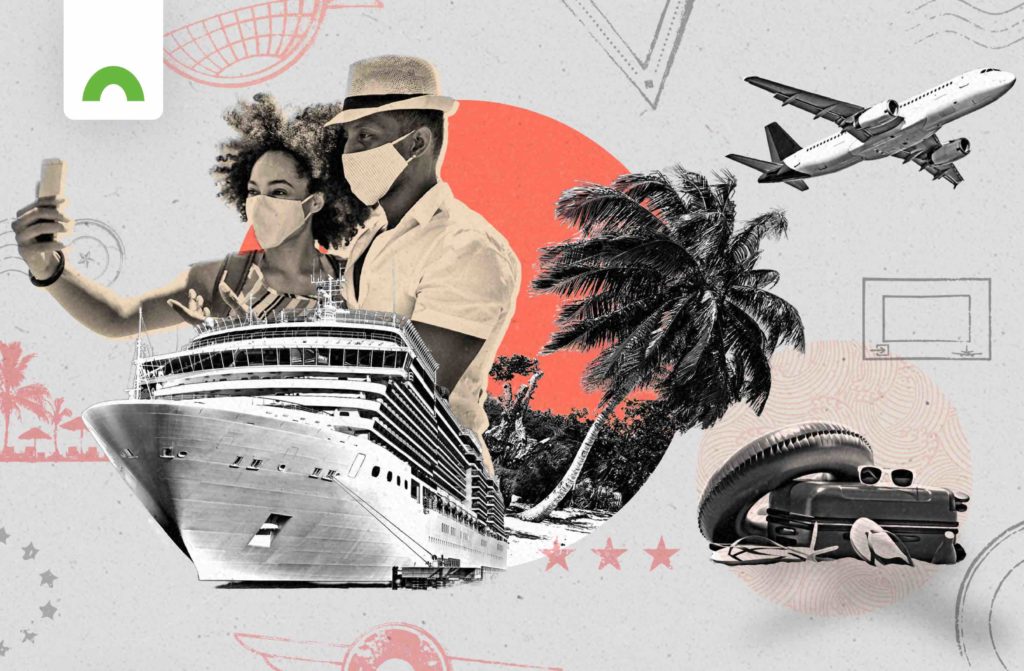Travel intent demonstrated during the first quarter of the year informs how the industry can prepare to meet new demand in the seasons that follow.
Expedia has done a deep dive into search and travel trends, drawing comparisons with year-on-year data from the various ‘destination super regions’: NORAM (North America); EMEA (Europe and the Middle East); APAC (Asia Pacific); and LATAM (Latin America). Let’s take a look at the findings.
First quarter learnings
Data from the Expedia study indicates an uptick in global travel search, an intention to extend travel time, even splurge, and a clear interest in sustainable tourism.
Demand is increasing online traffic
Travel searches are surging with all regions indicating a year-on-year increase. According to the report, search volume is up:
- 165% in the EMEA region;
- 70% in the NORAM region;
- 50% in the LATAM region; and
- 30% in the APAC region.
Among these regions, Taiwanese, French and German nationals are forecast to take the most vacation days this year.
Traveller confidence is growing
People are investing more time in travel research over a particular period with NORAM and EMEA travellers leading the pack with longer searches.
There are indications too that travel demand in the Northern Hemisphere will experience a surge over the upcoming summer period. The strong forecast for the Northern summer is based on the fact that bookings and searches have generally started trending earlier than usual.
Increase in accommodation bookings
The study finds that “global lodging bookings for hotels and vacation rentals combined were up 35% quarter-over-quarter”. Domestic travellers shows a preference for vacation rentals, indicated by a growth in rental night counts, especially in warm weather destinations. Meanwhile, the EMEA and NORAM regions indicate the biggest, albeit moderate increases in hotel stays during the first quarter.
Beach and big city stays top the list of booked global destinations.
The demand for business and ‘bleisure’ travel appears to be picking up, indicated by searches for business-friendly accommodation. Encouragement comes from finding that 56% of professionals who continue to work remotely are likely to take a bleisure trip in the next six months.
A cautiously optimistic outlook from the Mastercard Economics Institute reinforcing the recovery trend, estimates that 1,5 billion more global travellers will fly this year compared to 2021, with “more than one-third of those coming from Europe.” Among these are business flight bookings that exceed pre-pandemic levels.
Sustainability is increasingly important
Travellers want reassurance that they’re purchasing ecofriendly tourism products, understanding it may cost more. But to make that investment, they require information about sustainability from trusted travel resources and providers, including destination marketers, accommodation and transportation providers.
A separate Expedia study on Sustainable Travel found that “half of consumers would be willing to pay more for transportation, activities and lodging if the option was more sustainable” and, clearly, if it was better communicated.
Hygiene and cleanliness concerns related to COVID-19 have also proven pertinent: guest reviews over the last two years have demonstrated an expectation of safety reassurance.
Preparing for what comes next
The data shows us that there are opportunities to grow the business of tourism in the remainder of 2022.
- Tap into the emotional need for people to get away this year. Travel deprivation has made your prospective client susceptible and highly suggestible to the idea of escape, freedom and luxury.
“On average, working adults around the world plan to take nearly 21 days of vacation this year” – Expedia
- Structure special deals for longer stays or extend itineraries to take in additional activities or multi-modal stays in your destination.
The report suggests that North Americans may be more likely than other markets to splurge on travel. They mean to optimise their vacation time, visit multiple destinations and will opt for luxury.
- Ensure you present luxury upgrades on flight seats, transfers and rooms as alternative options on your base offering.
- Tailor your experience to business travellers and remote workers to lock in your share of bleisure travel.
- Show off your city (even second city) charms or the host of warm weather activities on offer in and near your coastal destination.
Travellers who are keen on sustainable tourism may suffer from overwhelm – they may feel compelled to travel responsibly but not know how to do that. That’s where you can help.
- Provide easy access to credible information on sustainability on your site – link up with trustworthy resources and display your authority on the subject, along with any relevant activities you offer and sustainability measures you’ve implemented.
- Adjust your online marketing content to be conducive to sustained engagement – present emotive imagery, comprehensive information not only on your products, but also on the destination, logistics, travel tips and client reviews.
- If you’re an accommodation provider, don’t skimp on information and visual media to showcase your rooms, amenities, location, recreational and public spaces – that way visitors to your site will be less likely to leave and search elsewhere. Design special products for families or groups desiring the staycation experience, including exclusive use of your property, self-catering options, and dining out information.
- Invest in translations of your marketing assets, so that trending markets have access to your product information in their own languages too.
- Ensure your COVID-19 safety information, including sanitation protocols, is freely available.
If customers are going to linger longer when they search, plan and book travel, keep them on your site. Whatever their motivations, clearly travel intent is on the rise – a promise that invites us to adjust and rebuild towards sustained growth.


Would you like to share your thoughts?
Your email address will not be published. Required fields are marked *